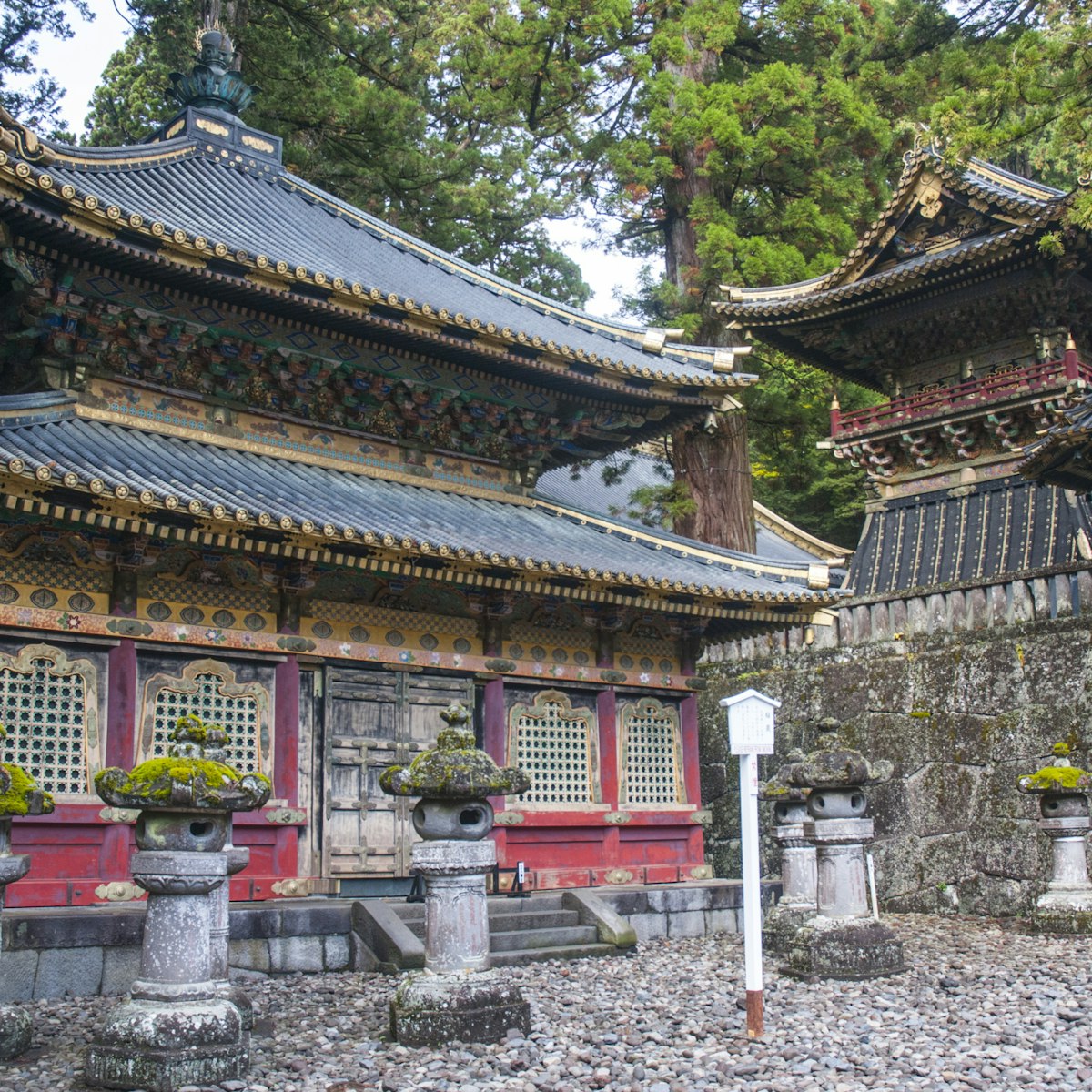Along this particularly scenic stretch of the Daiya-gawa, where white rapids swirl around rocks, is a row of Jiz¨ statues, the small stone effigies of the Buddhist protector of travellers and children. There were once 100, though many were damaged in a flood a century back, and remain in various states of crumble and mossiness. It's removed from the main sights, about 1km from the bridge, Shin-ky¨ (and is rarely crowded).

Getty Images
Lonely Planet's must-see attractions

0.77 MILES
°Õ¨²õ³ó¨-²µ¨± is ±·¾±°ì°ì¨'s biggest attraction, a shrine to the powerful shogun, Tokugawa Ieyasu (1543¨C1616). No expense was spared: when the original structure ¡

0.64 MILES
°Õ²¹¾±²â¨±-¾±²Ô, completed in 1653, is the mausoleum of Tokugawa Iemitsu (1604¨C51), the third Tokugawa shogun and grandson of Ieyasu. (Ieyasu was deified, which¡

0.71 MILES
¸é¾±²Ô²Ô¨-Âá¾±'s grand main hall, Sanbutsu-d¨ ('Hall of Three Buddhas'), was first built in 848; the current structure dates to 1645 and, with restoration work¡

1.13 MILES
Just to the left of the entrance to Futarasan-jinja is a 1km wooded path leading to °Õ²¹°ì¾±²Ô¨-Âá¾±²ÔÂá²¹, part of the greater shrine precinct. Just in front is¡

0.74 MILES
Futarasan-jinja was founded over 1200 years ago as a place to worship the mountain Nantai-san (2484m), his mountain consort, Nyoh¨-san (2483m), and their¡

0.77 MILES
The main shrine courtyard at °Õ¨²õ³ó¨-²µ¨± includes the Honden (±¾µî; Main Hall) and Haiden (’…µî; Hall of Worship). Inside these halls are paintings of the 36¡

±·¾±°ì°ì¨ Tamozawa Imperial Villa Memorial Park
0.24 MILES
About 1km west of Shin-ky¨ bridge, this splendidly restored imperial palace (c 1899) of more than 100 rooms showcases superb artisanship, with parts of¡

0.76 MILES
Adorned in gold leaf and some 500 carved images depicting folk tales, mythical beasts and Chinese sages, the 'Sunset Gate' is the most revered traditional¡
Nearby ±·¾±°ì°ì¨ attractions
1. ±·¾±°ì°ì¨ Tamozawa Imperial Villa Memorial Park
0.24 MILES
About 1km west of Shin-ky¨ bridge, this splendidly restored imperial palace (c 1899) of more than 100 rooms showcases superb artisanship, with parts of¡
0.64 MILES
°Õ²¹¾±²â¨±-¾±²Ô, completed in 1653, is the mausoleum of Tokugawa Iemitsu (1604¨C51), the third Tokugawa shogun and grandson of Ieyasu. (Ieyasu was deified, which¡
0.68 MILES
This Edo-era strolling garden can feel like a refuge from the temple crowds ¨C except during autumn, when the turning leaves are a great attraction.
0.69 MILES
This museum has an interesting collection of temple artefacts, sculptures and scrolls. Admission includes entry to the lovely Edo-period garden ³§³ó¨²â¨-±ð²Ô.
0.71 MILES
¸é¾±²Ô²Ô¨-Âá¾±'s grand main hall, Sanbutsu-d¨ ('Hall of Three Buddhas'), was first built in 848; the current structure dates to 1645 and, with restoration work¡
0.71 MILES
A towering stone torii (entrance gate) at the head of the stone steps on Omotesand¨ leading up to °Õ¨²õ³ó¨-²µ¨±, burial place of Tokugawa Ieyasu.
0.72 MILES
This five-tiered pagoda at °Õ¨²õ³ó¨-²µ¨± is an 1819 reconstruction of the mid-17th-century original. Buying a supplementary ticket affords you the chance to¡
8. ±·¾±°ì°ì¨ °Õ¨²õ³ó¨-²µ¨± Museum
0.72 MILES
Opened in 2015 for the 400th anniversary of Tokugawa Ieyasu's death, this modern building behind ¸é¾±²Ô²Ô¨-Âá¾± contains artefacts relating to the shogun,¡